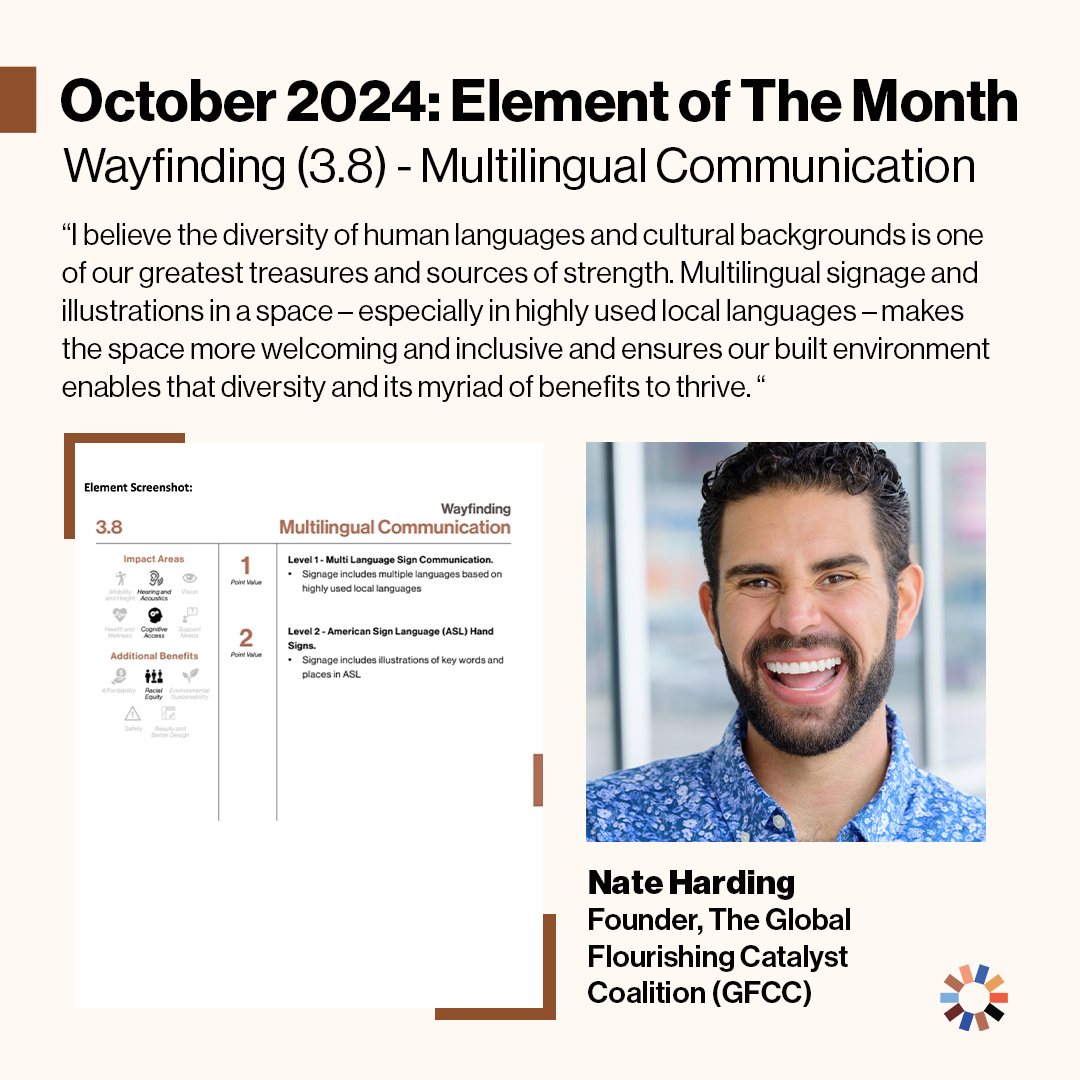The Inclusive Design Standards equip designers, builders, and developers with guidelines and frameworks for disability-forward housing creation. It highlights cross-disability accessibility and design decisions that are anchored in inclusion. Each month we feature one of our partners and the Element they’re most excited about.
Nate Harding / Founder / The Global Flourishing Catalyst Coalition (GFCC)

For this month’s Element of the Month, we’re proud to feature Nate Harding, Founder of the Global Flourishing Catalyst Coalition. We got to know Nate after he led a great session at a staff retreat last year. Nate’s mission is to cultivate a world where all people and planet Earth flourish. With this goal in mind, Nate founded The Global Flourishing Catalyst Coalition (GFCC) – a field catalyst to advance the emerging field of global flourishing. Nate chose the element of Multilingual Communication because of his strong belief that absent one universal language, multilingual communication creates the ability for everyone to have a clear understanding and be understood in their own language. He feels that using multiple languages in signage ultimately makes spaces more inclusive and more easily accessible.
Name of Element: Wayfinding (3.8) - Multilingual Communication
Level 1 – Multi Language Sign Communication.
• Signage includes multiple languages based on highly used local languages
Level 2 – American Sign Language (ASL) Hand Signs.
• Signage includes illustrations of keywords and places in ASL
Design Category: Building Components
Impact Area(s): Hearing and Acoustics, Cognitive Access
Additional Benefit(s): Racial Equity
Why is this element important to you, personally or for the project?
I believe the diversity of human languages and cultural backgrounds is one of our greatest treasures and sources of strength. Multilingual signage and illustrations in a space – especially in highly used local languages – makes the space more welcoming and inclusive and ensures our built environment enables that diversity and its myriad of benefits to thrive.
How would you explain this element to a 2nd grader?
Different people think and speak in different languages, and currently, there is no one language that all people understand. The “Multilingual Communication” design element encourages spaces to offer information in multiple languages and with pictures so more people can understand, access, and appropriately use more spaces.
What recommendations would you make to someone designing a disability-forward housing project (related to the design standards)?
I appreciate how the scoring for this design element goes beyond the “Level 1” of Multi-Language Sign Communication by including a “Level 2” of American Sign Language (ASL) hand signs. For anyone designing a disability-forward housing project, I recommend they aim to achieve a Level 2 score to make their project more inclusive.
